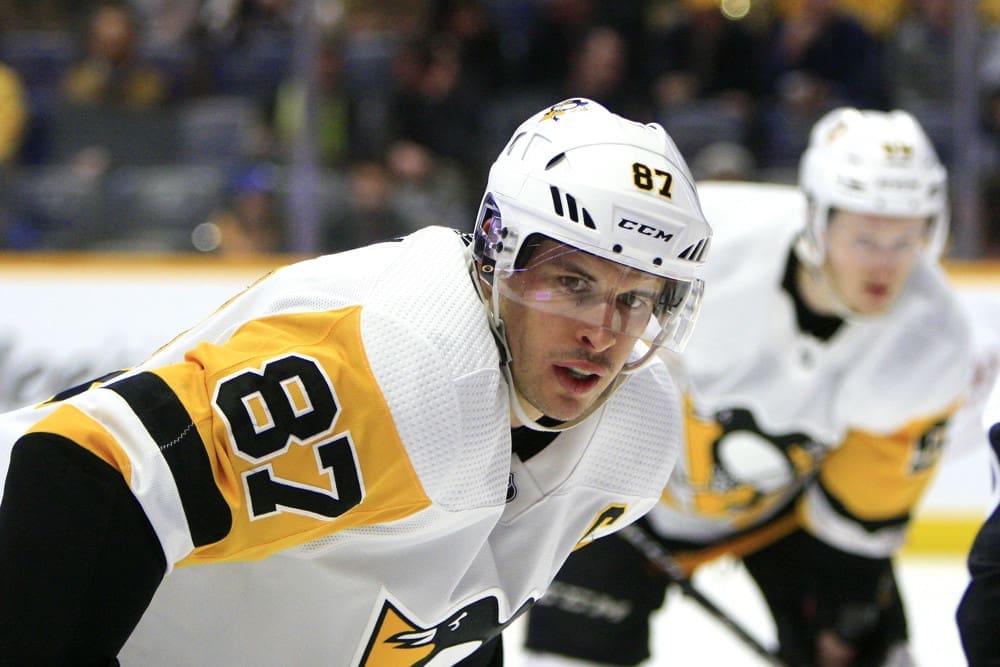Penguins
Tale of the Tape: Comparing Pittsburgh Penguins to Stanley Cup Teams

The Stanley Cup will be paraded through St. Louis by a few hundred thousand fans who have never before been part of a Stanley Cup party. After 52 years of existence, St. Louis finally joined the club of Stanley Cup winners. They did so despite being one of the worst teams in the first half of the season. And St. Louis did so with first-year, fourth string goalie Jordan Binnington, recently unemployed head coach Craig Berube and without extreme team speed. So what did we learn from the 2018-19 NHL season and what can we apply to the Pittsburgh Penguins?
The days following the Stanley Cup presentation are the best time to take inventory of the direction of the game and the needed elements to hoist Lord Stanley.
Commonalities in the Stanley Cup Final:
–Neither team can be called a speed team, can they? But neither Boston or St. Louis are slow.
–Each team put at least one bruising, stay-at-home defender in the lineup. Most often, each team put a pair of thumping defensemen in the lineup. St. Louis put Robert Bortuzzo and Joel Edmundson into the lineup. Boston put Zdeno Chara and Brandon Carlo on the ice. Though in fairness, Bortuzzo played only 17 playoff games and St. Louis swapped Edmundson for Bortuzzo in Game 7.
St. Louis pays only $2.1 million for the pair, however.
–St. Louis won with a lot of skill, determination, and goaltending. The series Corsi was exactly even, 50.0%. The Scoring chances where nearly identical, 127-123 in favor of St. Louis but St. Louis finished twice as many chances, 14-7.
The same storyline exists in the high-danger chance category, too. St. Louis and Boston were nearly equal, 48-44 (St. Louis), but St. Louis finished more, 9-4.
–Both were veteran teams. There wasn’t much youth infusion in St. Louis but a little in Boston. St. Louis captain Alex Pietrangelo is 29-years-old and Boston captain Zdeno Chara was the second oldest player in the NHL, behind only Matt Cullen.
The St. Louis top line age: Jayden Schwartz (26), Brayden Schenn (27), Vlad Taresnko (27).
The Boston top line age: Brad Marchand (31), Patrice Bergeron (33), David Pastrnak (23)
The youngest players in the lineup for St. Louis in Game 7 were bottom-six forwards Robert Thomas (19), Sammy Blais (22), and Zach Sanford (24), though Sanford got the tap for the second line in the playoffs. Defenseman Vince Dunn is only 22-years-old.
The youngsters in the Boston lineup are a little more prominent. Jake Debrusk (22), Karson Kuhlman (23), Danton Heinen (23), Charlie McAvoy (21), Brandon Carlo (22), Connor Clifton (24)
Average Age:
St. Louis Blues: 27.88
Boston Bruins: 29.05
Pittsburgh Penguins: 27.68
Average size:
St. Louis Blues: 6-foot-2, 206 pounds
Boston Bruins: 6-foot-1, 196 pounds
Pittsburgh Penguins: 6-foot-1, 197 pounds.
Corsi:
St. Louis Blues: 51.50%
Boston Bruins: 53.07%
Pittsburgh Penguins: 49.73%
5v5 GF:
St. Louis Blues: 53.5%. 166 goals.
Boston Bruins: 55.12%, 155 goals.
Pittsburgh Penguins: 54.82%, 182 goals.
5v5 Goals Against:
St. Louis Blues:147
Boston Bruins: 127
Pittsburgh Penguins: 150
Total Scoring Chances:
St. Louis Blues: 1851, 52.18%
Boston Bruins: 1677, 52.23%
Pittsburgh Penguins: 1871, 52.07%
*advanced stats courtesy of naturalstattrick.com
–All three teams were in the top 10 of scoring chance save percentage. Boston was second, the Penguins sixth, and St. Louis ninth.
–Only Boston was in the top 10 for high danger chances. They were eighth in the NHL. St. Louis was 23rd. The Penguins were 27th. Just imagine how bad that stat would be if the Penguins didn’t lead the league in high-danger chances from Feb. 23 to the end of the regular season.
–Boston was second and St. Louis third in high-danger chances allowed. The Penguins were 17th. Again, imagine how bad this stat would look for the Penguins if they didn’t lead the league in fewest allowed from Feb. 23 to the end of the regular season.
Analysis:
The Penguins are not too old, but they are 10 pounds lighter than St. Louis. The Penguins lack of puck possession and lack of high-danger suppression stand out. Fortunately, the Penguins appeared to correct their scoring chance issues later in the season but overall were not in a class with the Stanley Cup contenders.
Based purely on numbers, the Penguins puck possession and goals allowed are where they need to improve. The Penguins, of course, have a few forwards who are not defensive minded which inflates their goal totals but not their goal differential.
The unmeasurable statistics are heart, co-operative play, teamwork, and systematic play. Those are three areas in which the Penguins have been in decline since their last Stanley Cup in 2017. And there isn’t a stat for that.












